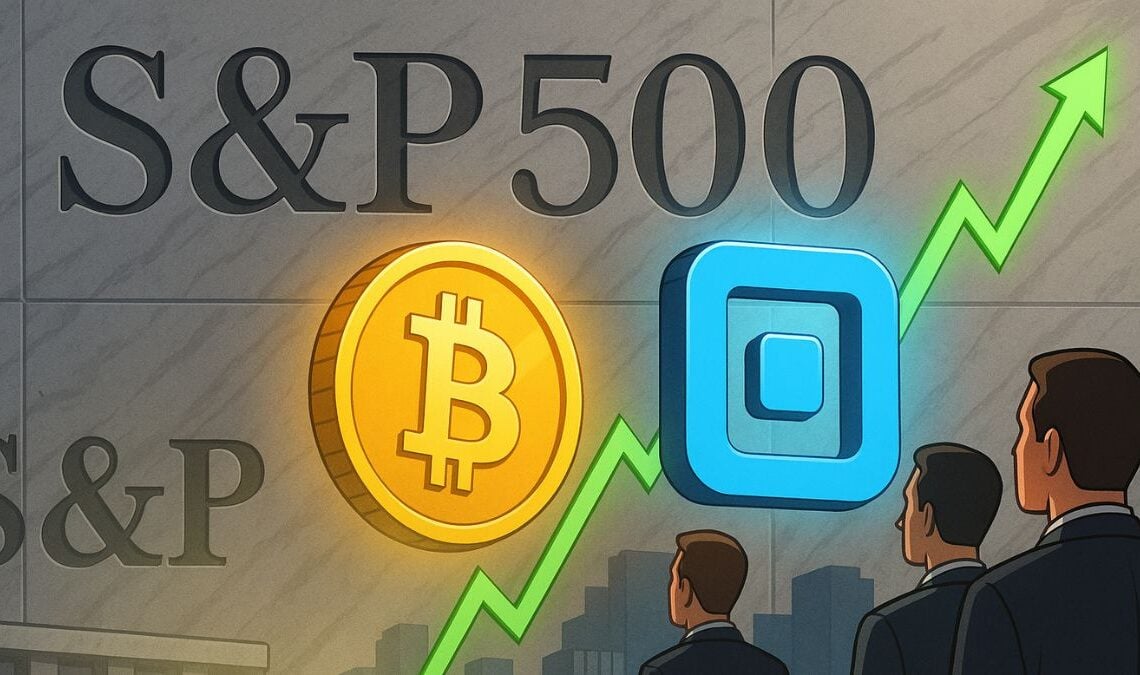In a move that signals growing acceptance of digital assets within traditional finance, the S&P 500 adds Block to its elite roster of companies. The inclusion of Block Inc. (formerly Square), a firm with deep ties to Bitcoin, marks a turning point for crypto’s visibility in mainstream equity markets.
Table of Contents
ToggleWhy It Matters That the S&P 500 Adds Block
The S&P 500 is widely regarded as the benchmark for the U.S. stock market. Companies listed in the index are considered financially stable, influential, and representative of major economic sectors. With the S&P 500 adding Block, exposure to Bitcoin is now quietly embedded into retirement portfolios, index funds, and institutional strategies.
Block, led by Jack Dorsey, has long positioned itself as a Bitcoin-forward company. It holds over 8,000 BTC on its balance sheet according to BitcoinTreasuries.net, placing it among the largest public holders of the cryptocurrency. Moreover, the company continues to integrate Bitcoin across its products, including the Cash App and its TBD developer platform.
Bitcoin Exposure on Wall Street: A New Paradigm?
Block’s addition is not just symbolic. It adds a layer of Bitcoin exposure to the S&P 500, affecting passive investors and ETFs tracking the index. While the allocation is indirect, it reinforces the notion that Bitcoin is no longer a fringe asset. It’s part of the new financial fabric.
Data from Google Finance shows Block’s stock gaining momentum following the announcement. Investor sentiment appears strong, especially among those seeking exposure to crypto through regulated channels. Twitter user 0xOnlyCalls noted the psychological significance of this development, calling it “the cleanest form of silent BTC adoption yet.”
Comparing Block to Coinbase: Different Paths, Same Impact
While Coinbase (NASDAQ: COIN) offers direct exposure to cryptocurrency markets, Block represents a hybrid model. It combines fintech innovation with a long-term Bitcoin strategy. Investors looking for less volatile exposure might now see Block as a strategic alternative to COIN or pure-play crypto stocks.
As noted by analysts tracking the COIN:NASDAQ, volatility in crypto exchanges often mirrors token price swings. Block, on the other hand, provides Bitcoin upside potential without the operational risks associated with trading platforms.
Institutional Interest Continues to Rise
The S&P 500 adding Block comes amid a broader institutional push into crypto-related assets. From BlackRock’s Bitcoin ETF to Fidelity’s Ethereum funds, Wall Street is no longer sitting on the sidelines. This latest move further bridges the gap between legacy finance and the decentralized economy.
It also adds credibility to Jack Dorsey’s long-term Bitcoin thesis. His vision of Bitcoin as the future of money now finds validation in one of the most influential financial indices in the world.
Final Thoughts: What the S&P 500 Adds Block Means for Bitcoin Investors
The moment the S&P 500 adds Block, Bitcoin’s legitimacy gets another boost. While the crypto world is used to sudden rallies and sharp corrections, this milestone represents something different: quiet, methodical integration into the financial system.
For investors, it’s a sign that Bitcoin is no longer just a speculative bet — it’s becoming part of the mainstream portfolio. Whether through ETFs, company treasuries, or now the S&P 500 itself, the digital asset continues to find new avenues to scale.Block’s presence in the S&P 500 is not the end of Bitcoin’s journey to Wall Street — but it might be the most important signal yet that crypto is here to stay.

















